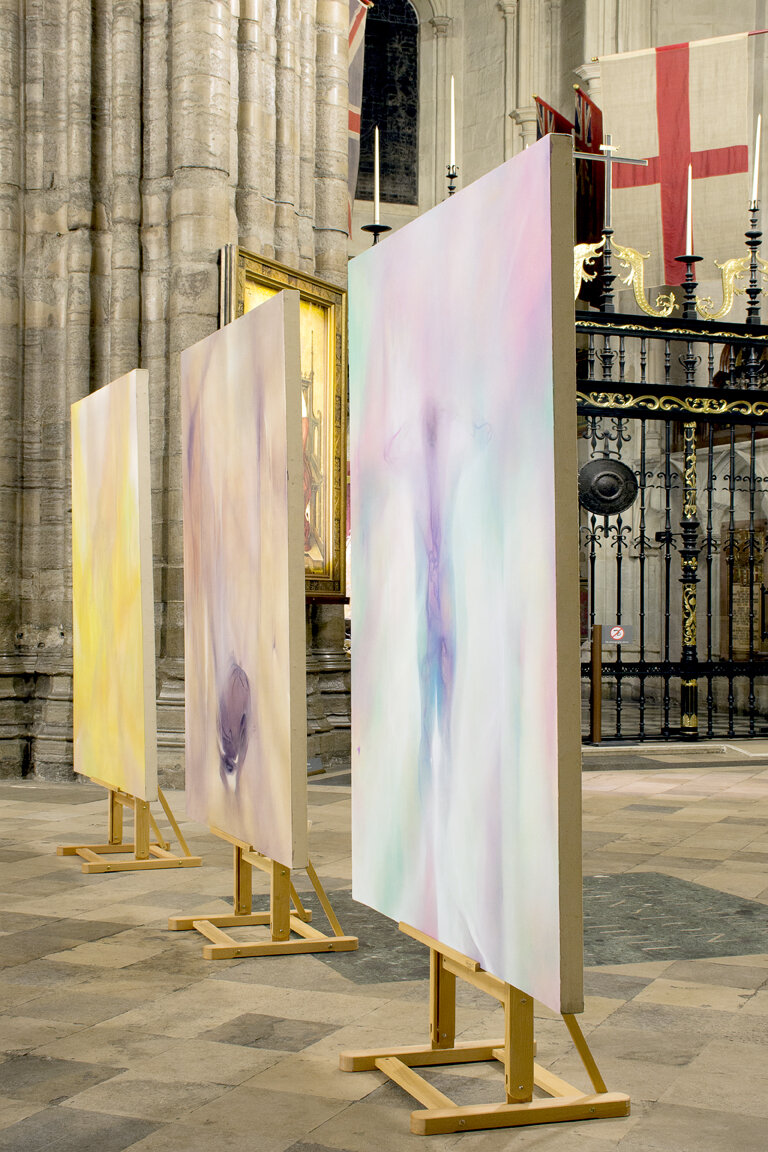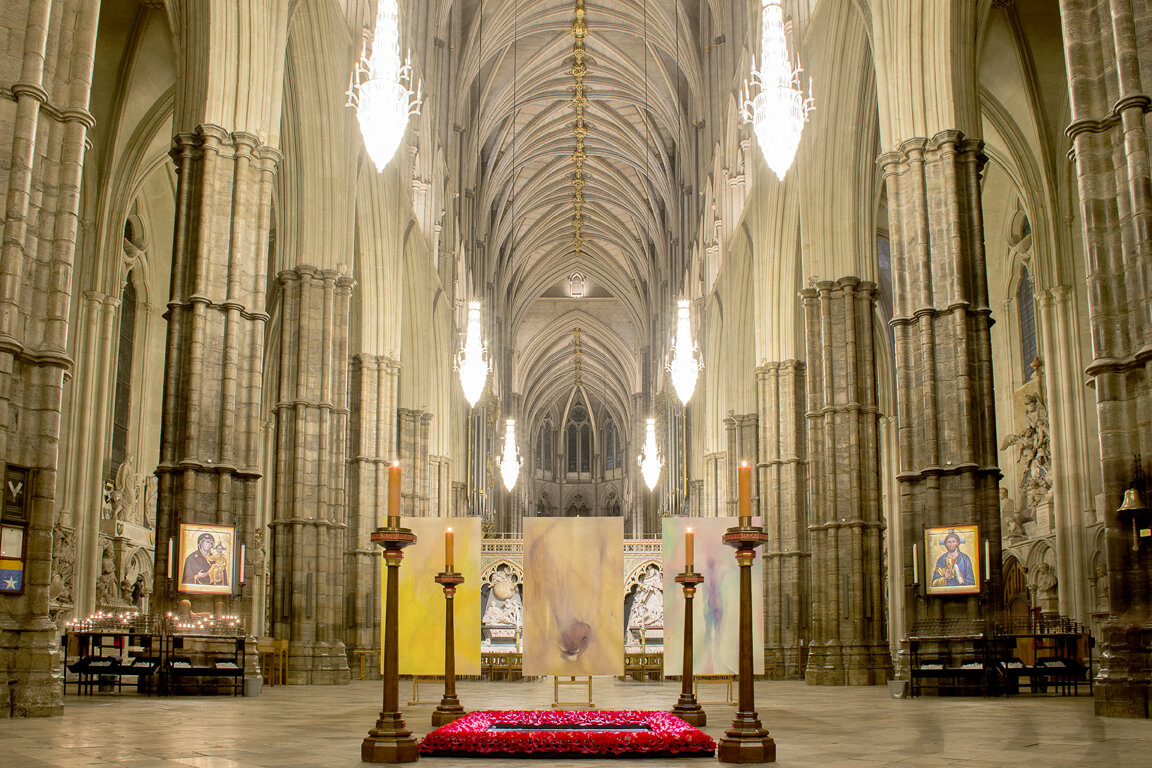
Reunion 1, 2012
Reunion 2, 2013
Reunion 3, 2013
Reunion with the Unknown Warrior, 2012-13
The Grave
In 1916, the Reverend David Railton conceived of the Grave when he noticed a burial in a garden at Armentières marked by a rough cross carrying the words ‘An Unknown British Soldier’. In August 1920 he wrote about this conception to the Dean of Westminster, Herbert Ryle, who then created the memorial. In order to choose the Warrior, four unknown British servicemen were exhumed from four battle areas: the Aisne, the Somme, Arras and Ypres. The remains were placed in the chapel at St Pol-sur-Ternoise on the night of November 7th 1920, each one wrapped in a Union flag. That night Brigadier General L.J.Wyatt and Colonel E.A.S. Gell went into the chapel alone: they had no idea from which area the bodies had come. General Wyatt chose one of the four for Westminster, and the other three soldiers were then reburied at the Front.
The paintings
The triptych is intended to pay homage to all those who fought in the Great War and particularly to celebrate the bonds between these four soldiers who, even in death, were drawn together by a form of duty. Each painting is an imagined depiction showing one of the other three unknown soldiers, and the canvases are the same size as the actual tomb: 7 x 4 feet. The soldiers are caught in light and movement, amid sweeps of colour which have emerged by drawing the Union flag. On November 5th 2015, the paintings were positioned around the Grave of the Unknown Warrior in the Nave of the Abbey during Evensong, and spent the night with the memorial. A reunion of sorts.
Each painting is oil on canvas and 7 x 4 feet.









